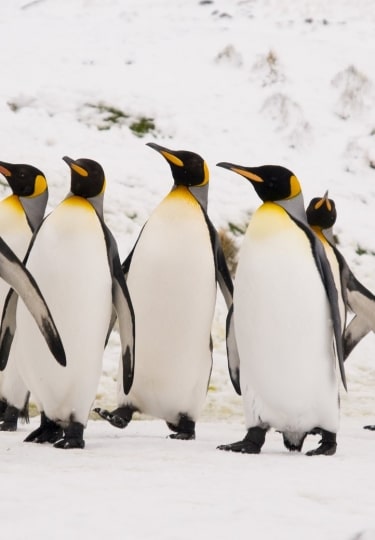Gazing at towering icebergs shot with vivid blue, or jagged mountains cloaked in thick snow, you’d be forgiven for wondering how what’s technically the world’s largest desert could support much life. But you’d be mistaken. One of the biggest thrills of sailing these icy channels and pristine bays is spotting the wildlife in Antarctica.
The waters around it are teeming with krill, a miniature crustacean, vital sustenance for whales. Fish, too, eat krill, and penguins, many species of which are found on the edges of the frozen continent, feast on these fish. Seals share the spoils, with the most aggressive, the leopard seal, even feeding on the occasional penguin.
And then there are the seabirds, from graceful wandering albatross to storm petrels, skuas, and terns. So pack your binoculars, dress up warm, and prepare for an eye-opening voyage to gaze at the wildlife of the frozen continent.
Humpback Whale
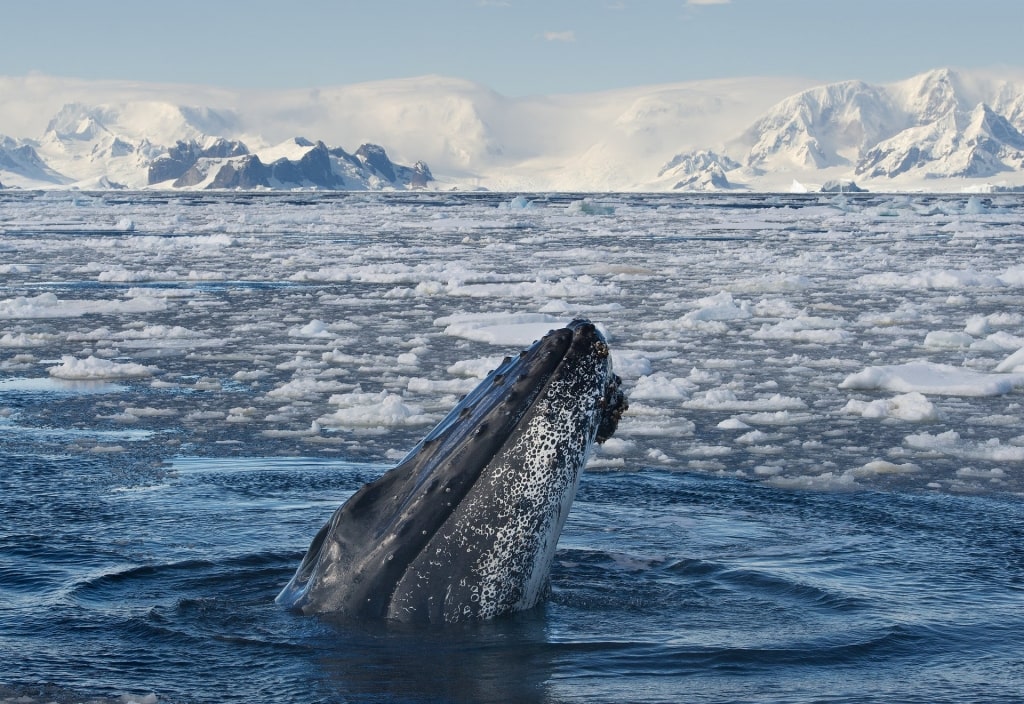
Humpback Whale
The most acrobatic of marine animals in Antarctica, humpbacks migrate here from equatorial waters in November, staying until March. You could spot them even before you reach Antarctica, in the Drake Passage, the body of water between the curled toe of South America and the tip of the Antarctic peninsula.
February and March are the best times to go to Antarctica to spot these whales, which are attracted to waters where they can gorge on krill. Humpbacks are what’s known as baleen whales. They have no teeth—only a fibrous filter in their mouth—and only eat tiny creatures.
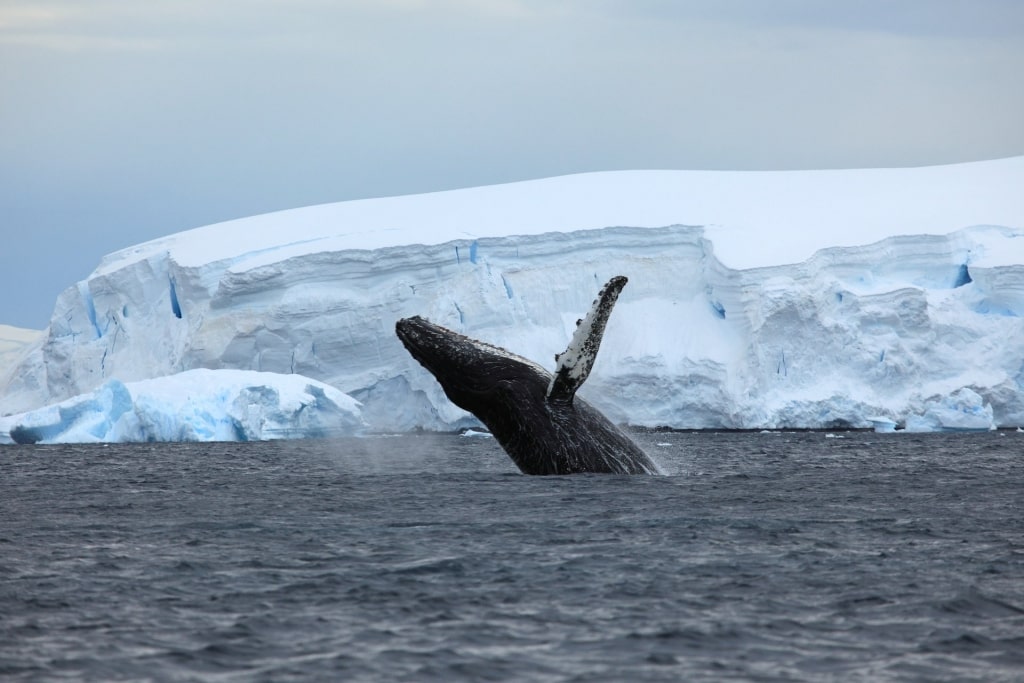
Humpback Whale
Up to 52 feet long, humpbacks will breach, leaping right out of the water, crashing down with a huge splash. They spy-hop, balancing in the water with their tails to poke their nose out vertically and have a look around, and slap their tails on the water to communicate. They also “sing” to one another, a hauntingly beautiful sound if you’re lucky enough to hear it.
Paradise Bay, rich in krill, is one of the best places to spot humpback whales, as is the Gerlache Strait, between mountainous Anvers Island and Brabant Island.
Antarctic Fur Seal
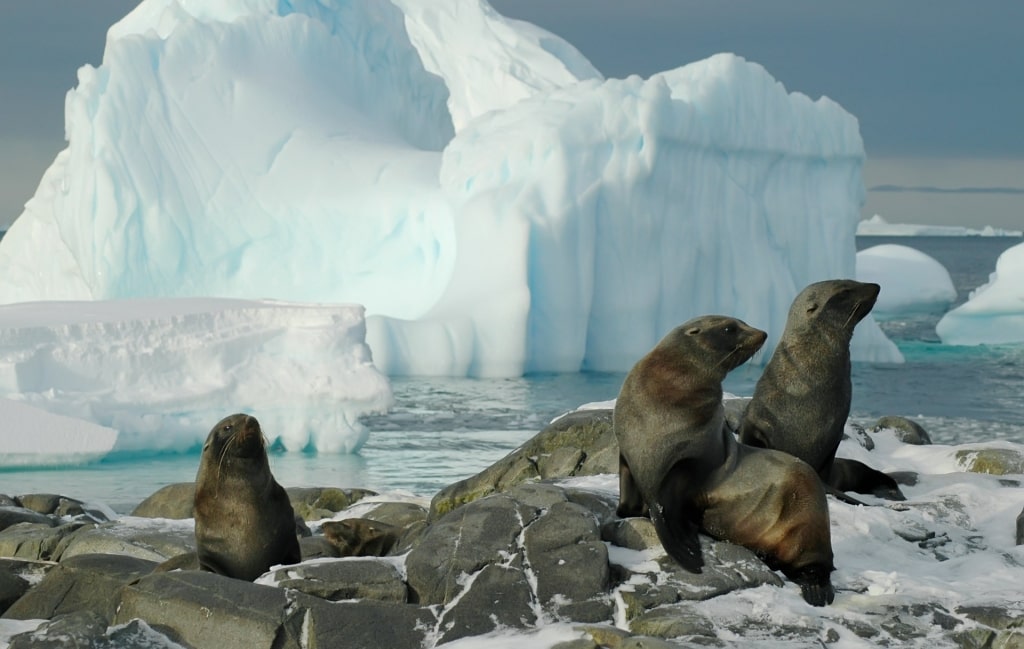
Antarctic Fur Seal
Almost hunted to extinction for their brown fur, Antarctic fur seals have made a successful recovery, with scientists estimating a population in Antarctica of anything between two and four million individuals.
These seals, one of the most endearing animals that live in Antarctica, are different from their other Antarctic cousins in that they have visible ears. They can also use their rear flippers as “feet”, enabling them to move fast on land, although they’re far more streamlined in the water.
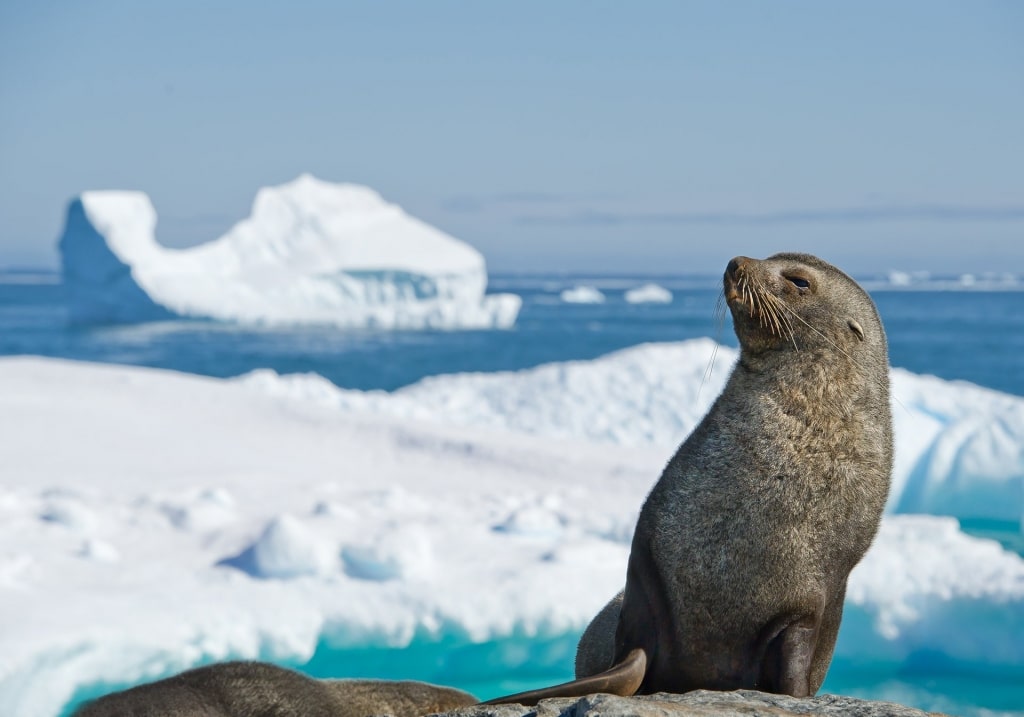
Antarctic Fur Seal
While mature fur seals are solitary, you may see large harems of more than 20 individuals hauled out on beaches early in the season, when females are nursing their pups. Each harem is guarded by a male, who has most likely fought long and hard for control.
Outside the breeding season, you’ll spot fur seals hauled out on ice floes, or lying on beaches, often dozing, surrounded by hundreds of penguins. Elephant Island is usually an easy place to spot them.
Fur seals feed mainly on krill and one individual can consume as much as a ton of krill in a year. They will dive to forage, staying underwater for 10 minutes at a time. They’re small relative to leopard and elephant seals, at about six feet long, and must contend with orcas and leopard seals as their main predators.
Orca
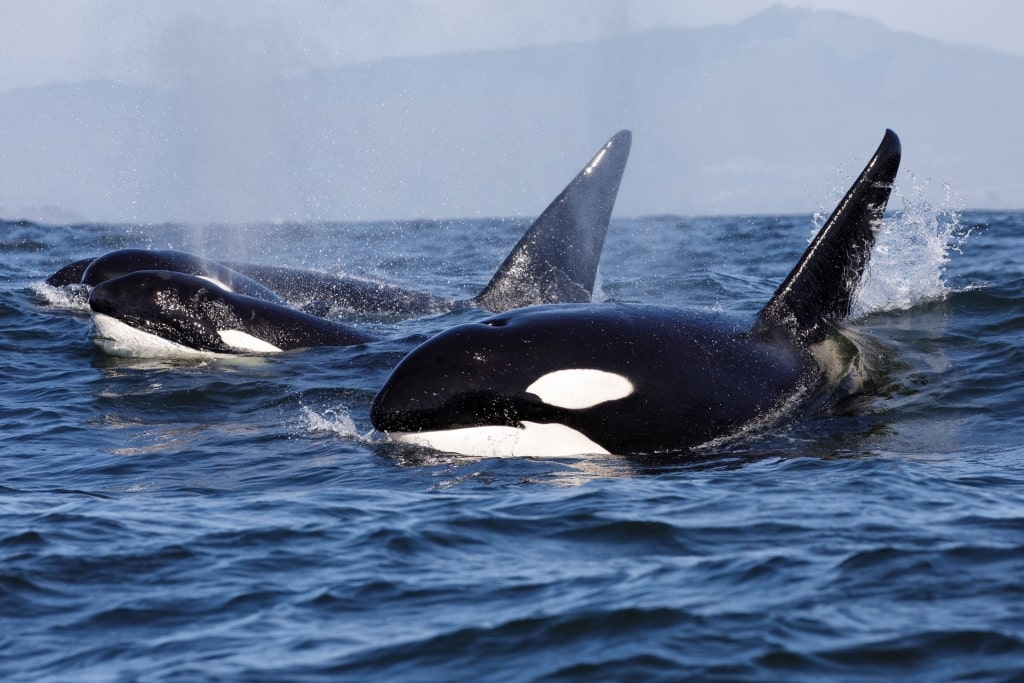
Orca
The sleek, black-and-white orca is, technically, a dolphin; it’s the largest in the dolphin family, although it’s widely known as the orca whale, or killer whale.
Orcas grow up to around 26 feet long and, their distinctive coloring aside, are distinguished by their tall, black dorsal fin. They are toothed whales, with actual teeth as opposed to baleen whales like the humpback, minke, and blue whales, and as such, hunt much bigger prey.
Orcas stay in family pods for much of their lives, hunting as a pack in a coordinated effort. Antarctica is one of the best places to see orcas, so if you spot one, there should be others around.
Orcas are highly intelligent and famously aggressive; they’ve even been known to hurl themselves through the surf onto a stony beach to seize a seal, or grab penguins as they dive off the ice floes into the water.
As well as seals and penguins, they will eat fish and squid, and on occasion, will even attack other whales.
Gentoo Penguin
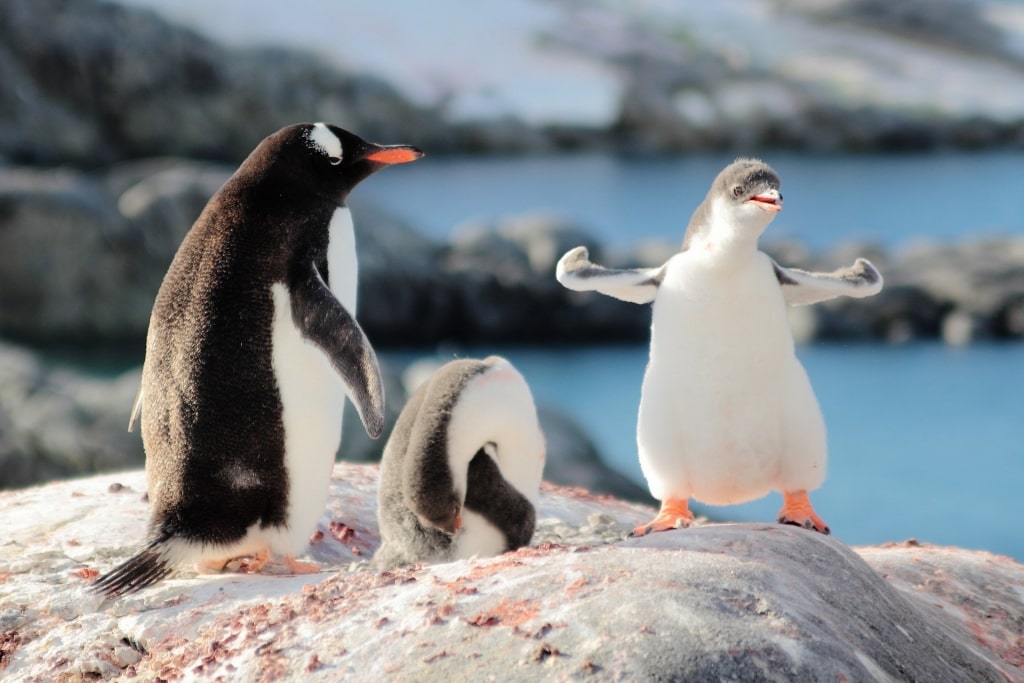
Gentoo Penguin
There’s something impossibly endearing about penguins, chic in their black and white tuxedo plumage, and comical as they go about their business. Gentoos have a black head with a white eye patch and a bright orange beak. They also have a distinctive tail, which sticks out behind them like a fan.
Seeing gentoo penguins is one of the best reasons to visit Antarctica—you’ll see them waddling across the ice, gliding on their bellies, squabbling over the choicest stones for nest building, and diving off icy cliffs, swimming like underwater bullets on the lookout for fish.
Gentoo penguins are less common in Antarctica than some of their relatives, but you’ll almost certainly see them in Paradise Bay and on the shores of Elephant Island.
Read: Where to See Penguins in South America
Elephant Seal
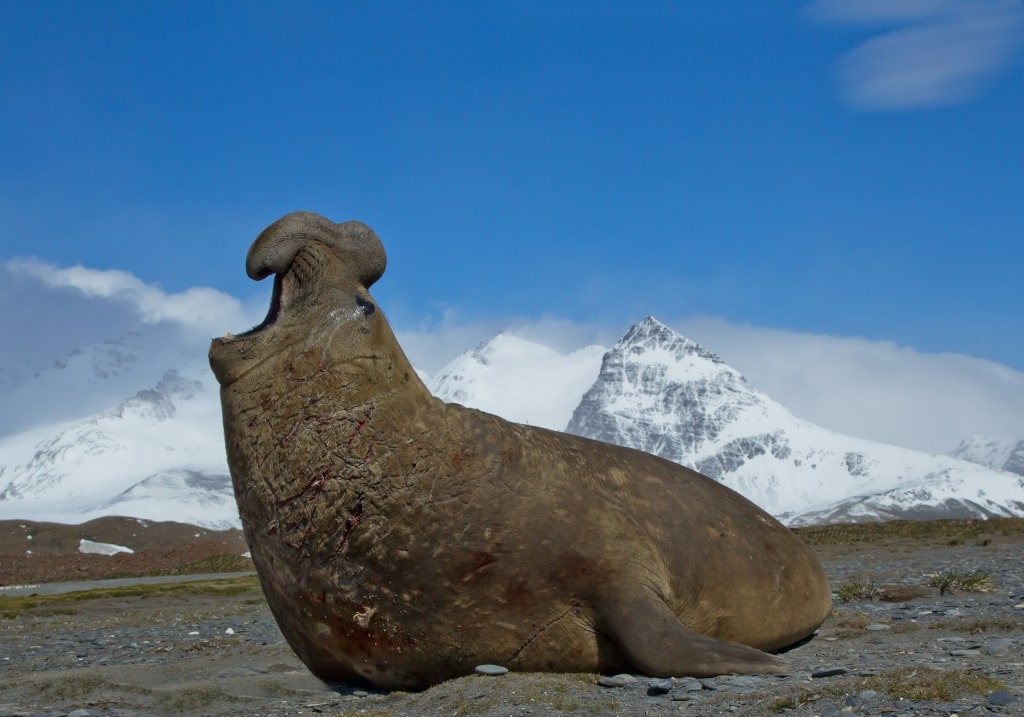
Elephant Seal
Southern elephant seals are the largest of all seal species; the males can reach a jaw-dropping 19 feet long, weighing in at more than 8,000 pounds. Size aside, these seals are distinguished by their snout; on males, this bears a resemblance to the wrinkled trunk of an elephant.
They’re noisy, especially during breeding season, and not the most fragrant of mammals; if you’re near a colony, there will be a distinct whiff of rotting fish and ammonia.
Elephant seals are extremely well adapted to their environment. They have been recorded as diving more than 7,000 feet under the ocean to feed on squid, octopus, and rays, and can stay underwater for well over an hour.
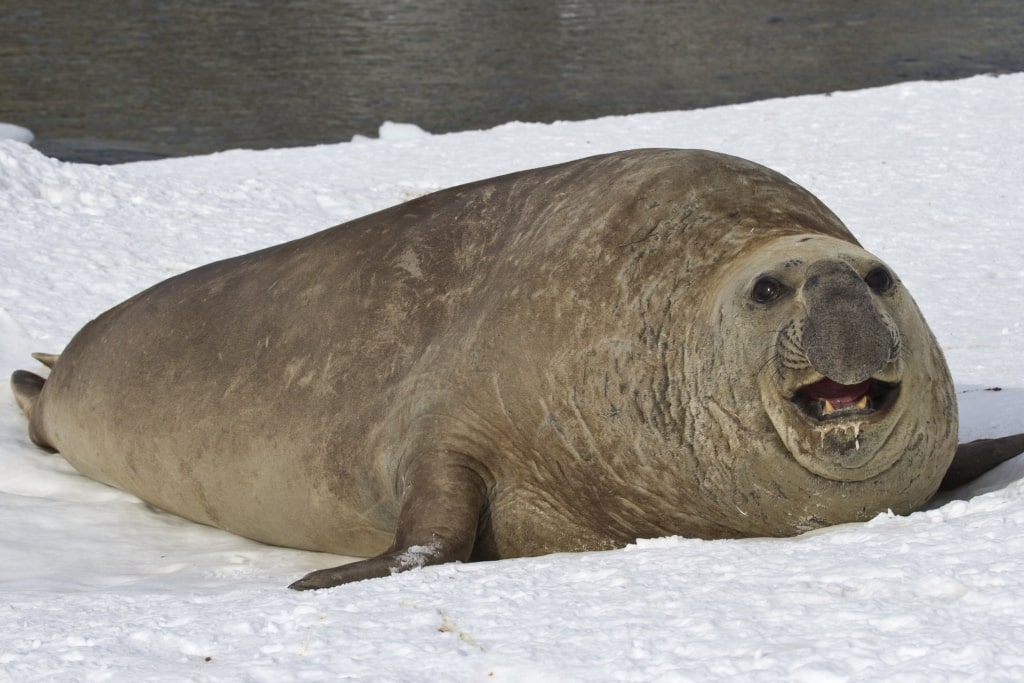
Elephant Seal
These seals breed in the Antarctic winter, so if you arrive early in the season, in November, you may see vast harems hauled out on stony beaches, controlled by a dominant male.
Pups are weaned quickly, in just over three weeks, after which the youngsters must learn to feed themselves. Elephant seals don’t have many predators, although orcas and the aggressive leopard seal will take pups if the opportunity arises.
Chinstrap Penguin
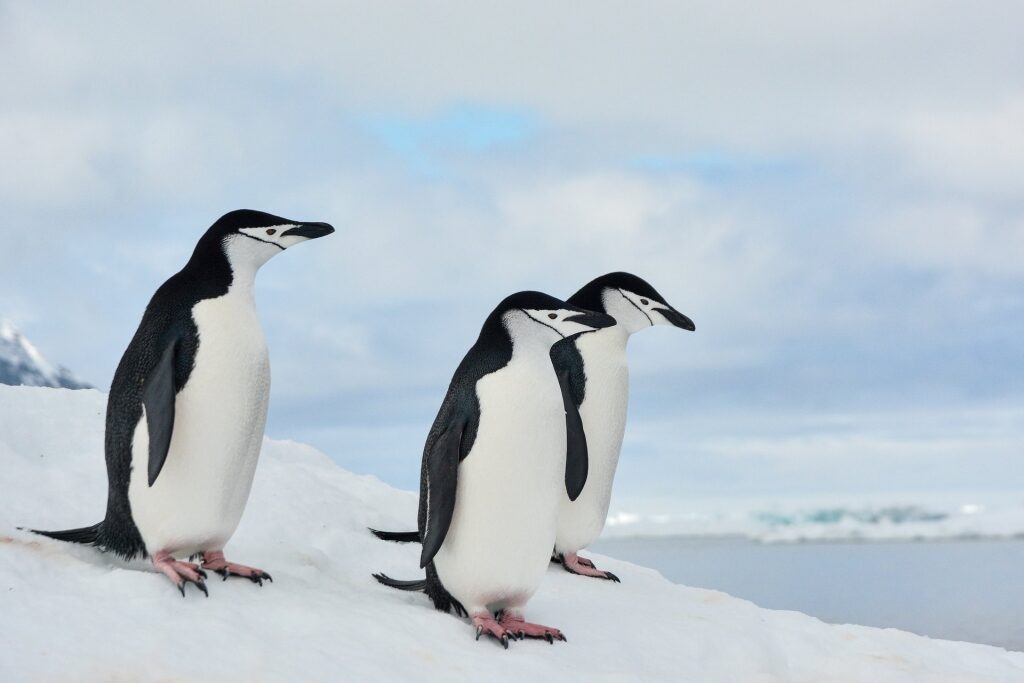
Chinstrap Penguin
The dapper chinstrap penguin, named because of the black “strap” marking under its chin, is one of the most abundant birds in Antarctica. There are an estimated eight million breeding pairs, usually living in vast, noisy colonies of up to 100,000 couples.
You may see chinstraps in mixed colonies, along with Adélie and gentoo penguins. They like to nest high up, so you could spot them in improbable locations, like at the top of a steep slope of snow and ice.
Chinstraps nest on Elephant Island, too, 152 miles from the tip of the peninsula, as well as on the icy slopes framing the Gerlache Strait.
Minke Whale
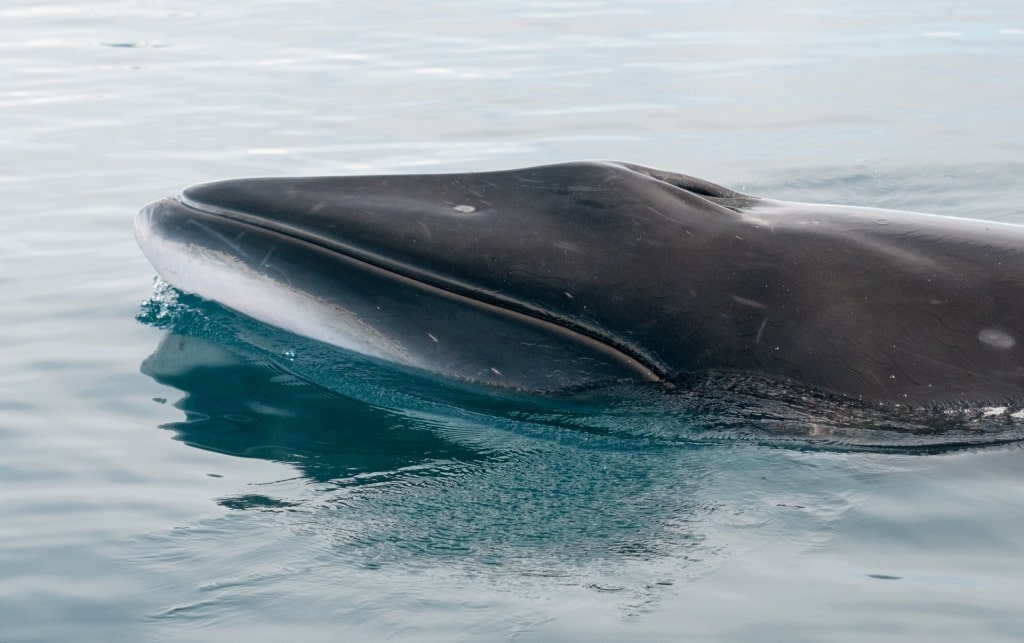
Minke Whale
One of the most common whales in Antarctica, the minke whale is gray with a white belly and grows up to 29 feet long, making it one of the smaller cetaceans in Antarctica. Minkes are less acrobatic than humpbacks, but they have a natural curiosity and will spy hop to have a look at who’s around.
They are well adapted to live in Antarctica, and although some migrate to warmer waters to breed, scientists have discovered that some minke whales spend the winter in Antarctica. They have the ability to swim for long distances under the ice, popping up through holes in the ice floes to breathe.
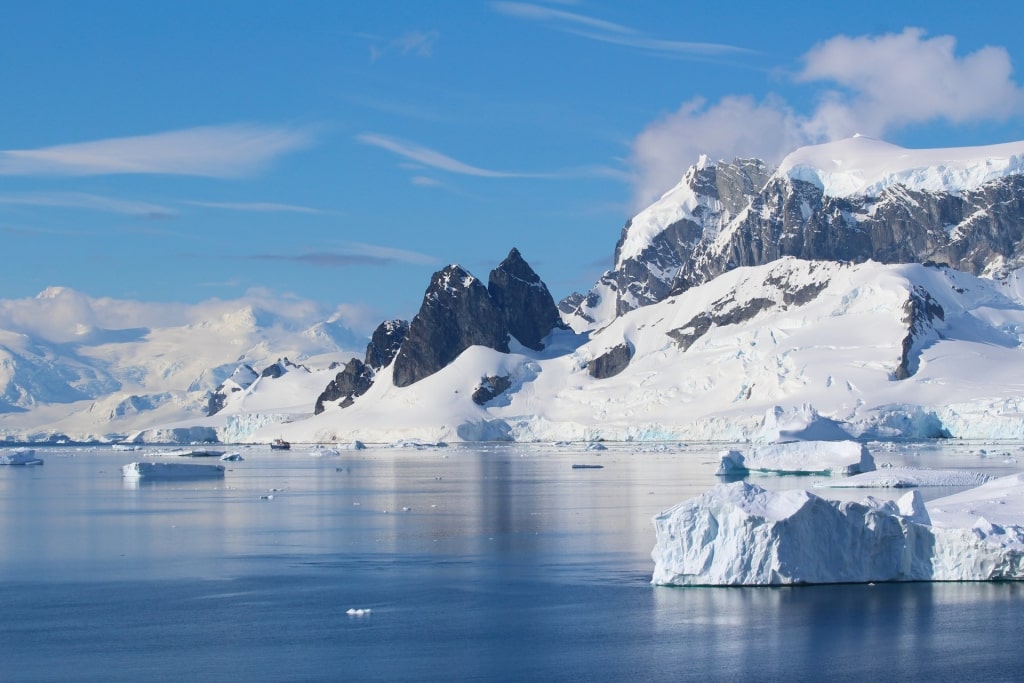
Gerlache Strait
The dazzling Gerlache Strait, a narrow waterway framed by jagged white mountains and icebergs the size of cathedrals, is a good place to spot minke whales, as there are large concentrations of krill here.
Read: Wildlife Photography Tips for Beginners
Brown Skua
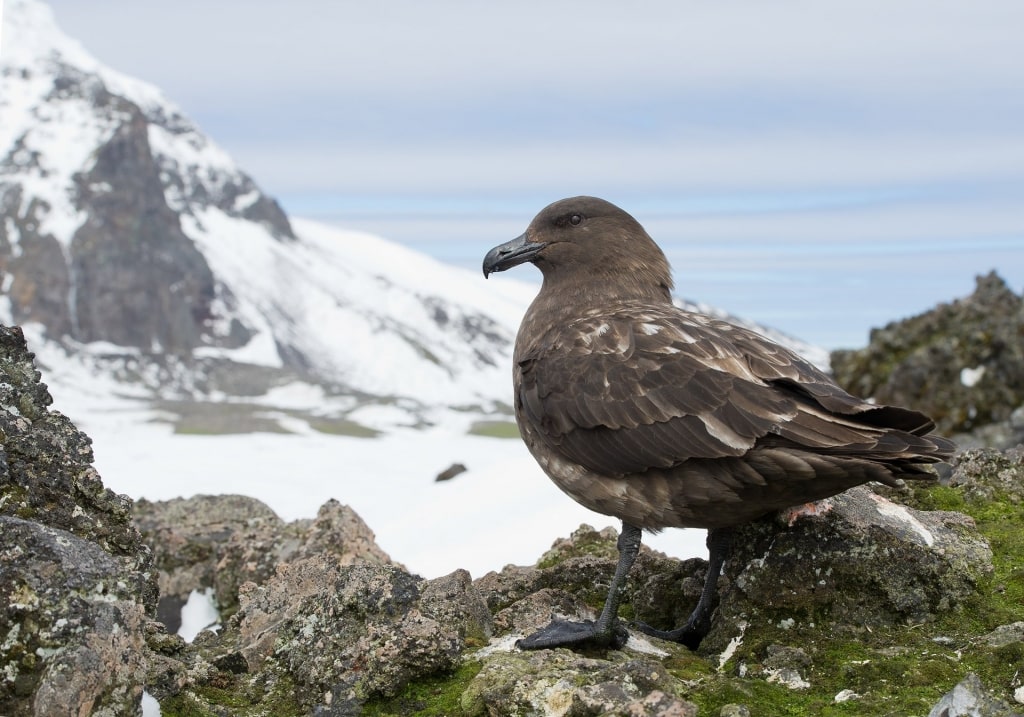
Brown Skua
Skuas are the pirates of the Antarctic bird world. These stocky brown birds are the size of a chunky gull, with a distinctive white flash on each wing. They feed on fish and krill, supplementing their diet with penguin eggs and small chicks, and are fast and powerful in flight.
What’s interesting about skuas is their aggressive behavior. You might spot skuas doing aerial battle with other birds that are carrying, say, a fish in their beak, forcing the victim to give up its catch, or regurgitate food stored in its crop, mid-air.
You’ll also see them hanging around penguin colonies, waiting to pick their moment and prey on an unattended chick, or an egg.
King Penguin
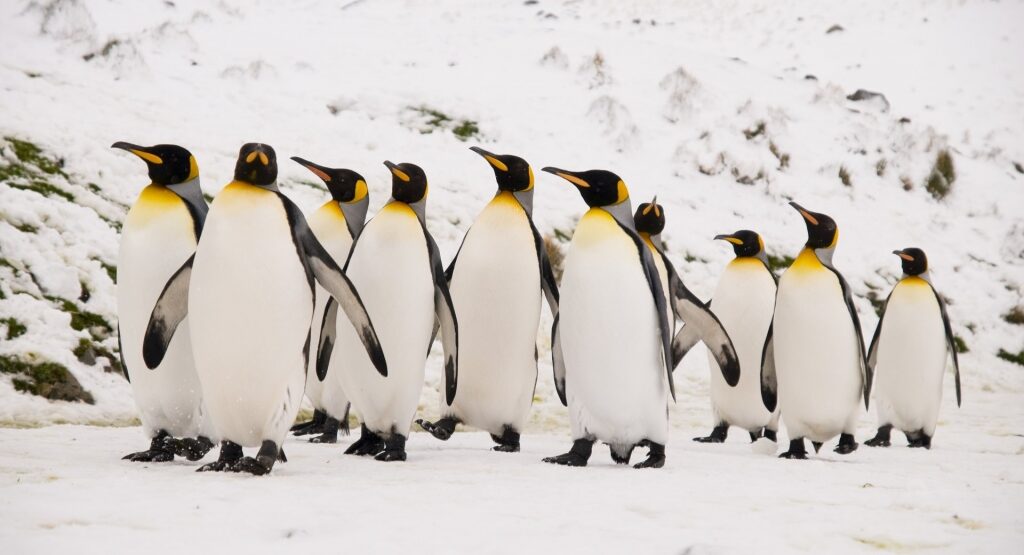
King Penguin
The king penguin is a majestic-looking bird, second in size in the penguin family only to emperor penguins, which are found much further south in Antarctica. King penguins prefer the sub-Antarctic islands to the icy peninsula itself, and you could well see them on Elephant Island.
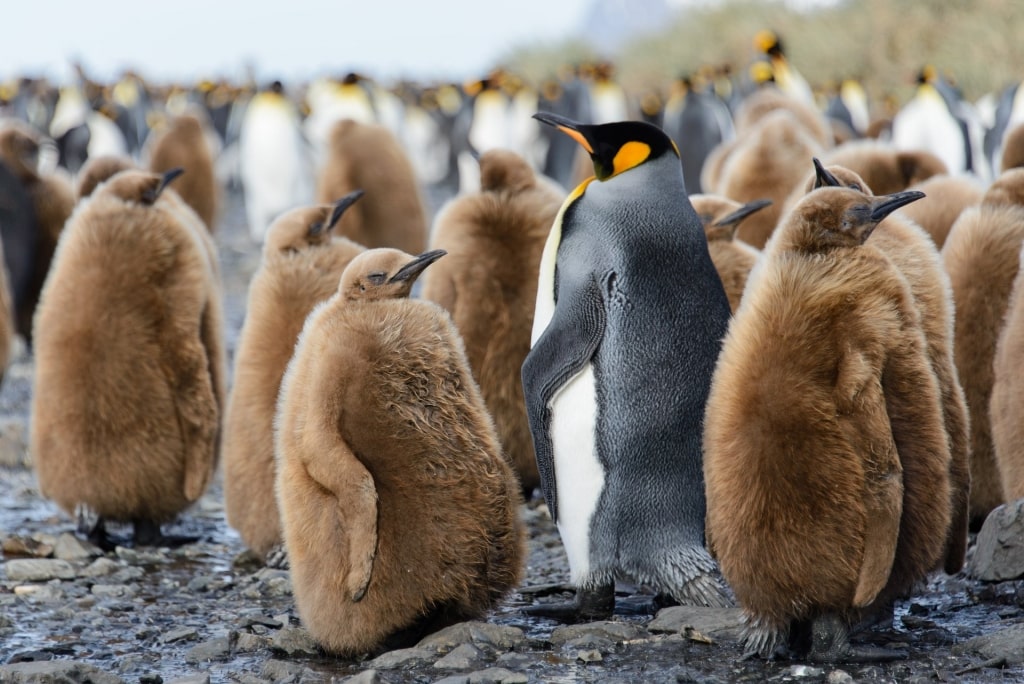
King Penguin
Up to three feet tall and known for their gray, black, and bright yellow plumage, these are the most colorful of all penguins. Their chicks look enormous, thanks to a dense layer of brown down that keeps them warm until they molt to reveal their adult colors.
King penguins are unusual in that they don’t build nests—not even rudimentary piles of stones like some of their cousins. Instead, the egg is carried around on the feet of one of the parents, covered by a protective flap of skin.
The parents can shuffle the egg between them so each has a chance to go off and feed on fish and squid. By chasing prey that gives off bioluminescence in the dark, cold water, these penguins are able to feed at night as well as by day.
Leopard Seal
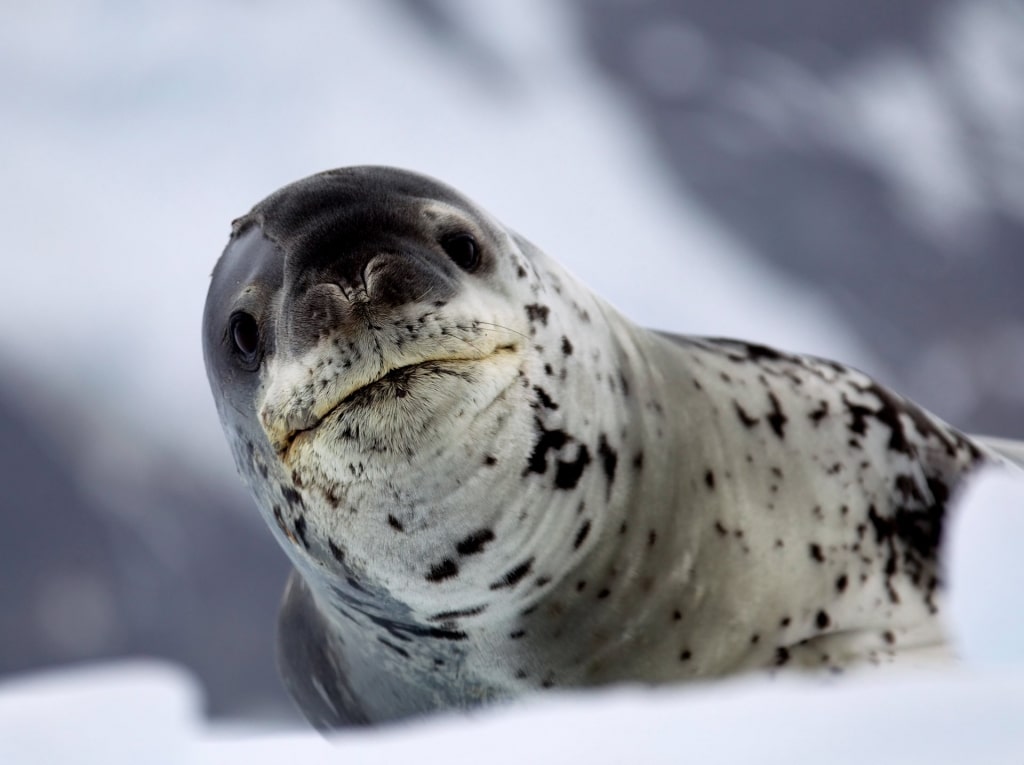
Leopard Seal
Named because of their gray coat, spotted like a leopard, these seals are among the biggest of the seal family. The females, which are larger than the males, reach up to 11 feet long.
They’re also powerful, streamlined, and fast. Their appearance can be deceptive; the mouth curves up at the edges, giving the seal an illusion of smiling while it’s at rest.
Aggressive and effective hunters, leopard seals are the only members of the seal family to feed on other seals, although they also eat fish, squid, and penguins. A common method of snaring a penguin is to wait under the ice until the birds have dived into the water, the seal snatching the unsuspecting bird in its powerful jaws.
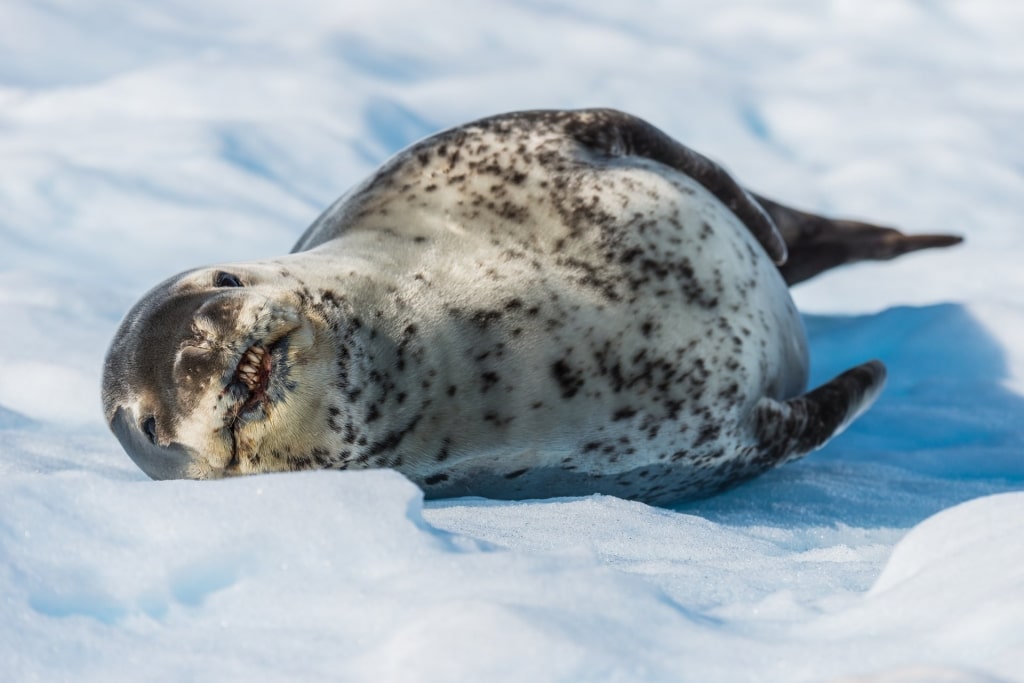
Leopard Seal
Leopard seals are solitary animals, and as such, have a loud call during the mating season when they are searching for a partner. This is in the Antarctic winter; pups are born in spring, around November, when they have the best chance of survival. The only predator that threatens young leopard seals is the orca.
Look for leopard seals hauled out on ice floes, where they may wait for prey. They’re common in Antarctica so you have a good chance of spotting one wherever you go.
Read: How to Spot Marine Mammals From a Cruise Ship
Wandering Albatross
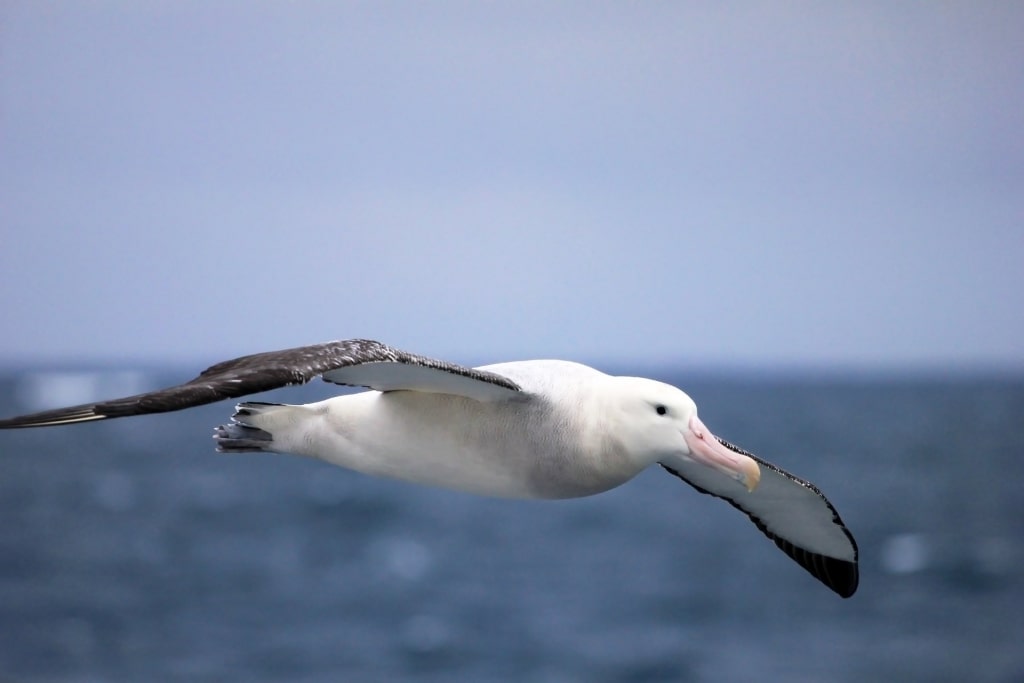
Wandering Albatross
There’s a real thrill to spotting a graceful wandering albatross skimming the waves of the Drake Passage, navigating the peaks and troughs with hypnotic ease.
This magnificent bird, also known as the white-winged albatross or snowy albatross, has a white head and body, speckled gray-black wings and a distinctive, hooked pink beak. It’s the largest flying bird on the planet with a wingspan of up to an incredible 11 feet, and it can live for up to 50 years.
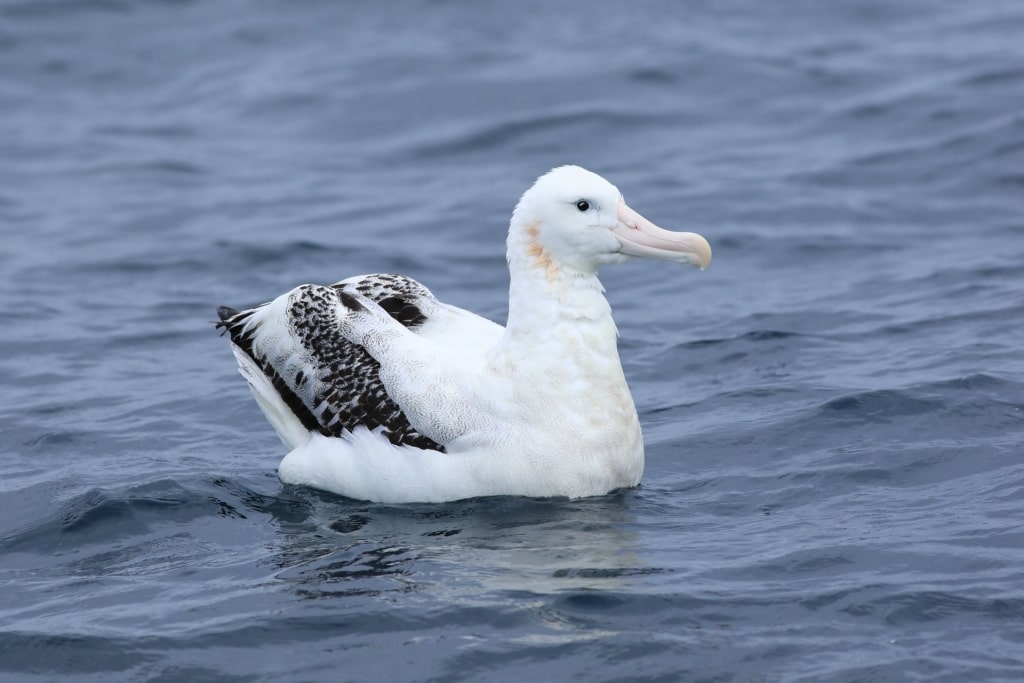
Wandering Albatross
Despite its size, the albatross is extremely efficient and can glide for hours at a time, expending virtually no energy. They feed on fish, crustaceans, squid and octopus, although they’ll scavenge anything that they find floating in the water.
Once juveniles, identifiable by their darker plumage, have fledged, they spend between five and 10 years at sea before making landfall in the sub-Antarctic islands to breed. Sadly, these beautiful birds are endangered, mainly due to human activity, and there are only an estimated 20,000 adults left in the wild.
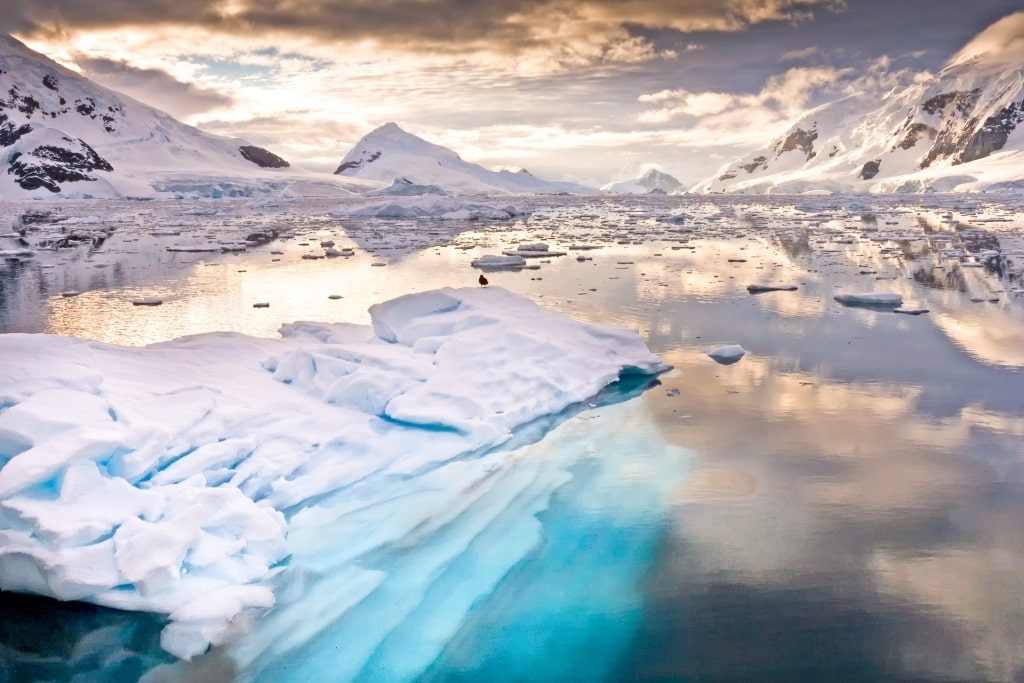
Paradise Bay
Inspired to explore the icy wilderness of Antarctica and spot extraordinary wildlife? Browse our cruises to Antarctica and plan the adventure of a lifetime with Celebrity.
